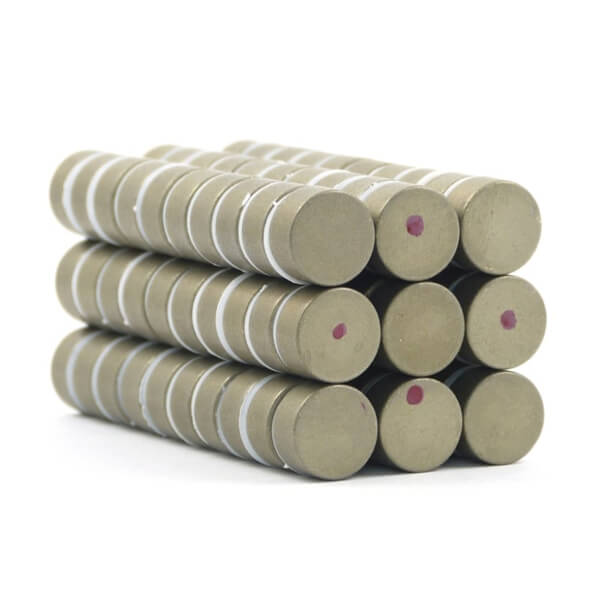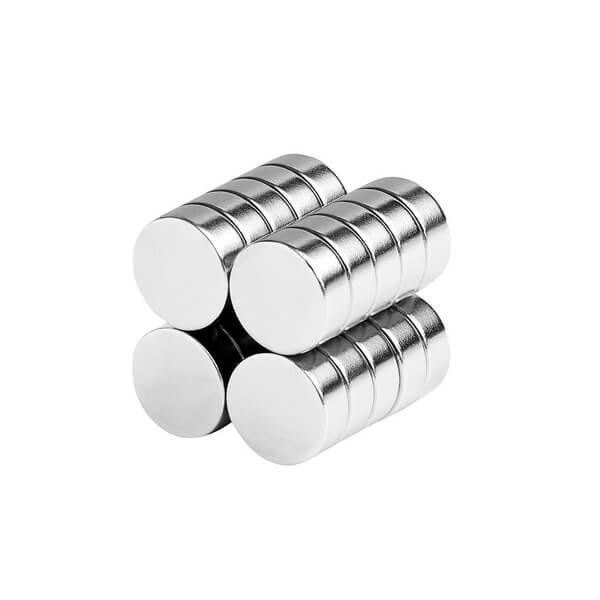Disc magnet is generally measured by the diameter and thickness, then its thickness is always smaller than the diameter. The great majority of disc magnet are axially magnetized and widely served various types of industrial or civil application, such as holding purpose and speaker magnet. Diametrically magnetized pattern is also offered for round magnet and most of diametrically magnetized disc magnet are used as the sensor magnets.
Material Classifications of Disc Magnet
Disc magnets are available in different permanent magnetic material, include ferrite disc magnets, SmCo disc magnets, and Neodymium disc magnets. The last two options are also collectively referred to as rare earth disc magnets.
Disc Magnet Calculator
Notes:
- This calculator adapts to non-coating and non-chamfer sintered Neodymium magnet, sintered Samarium Cobalt magnet, and sintered ferrite magnet.
- Gauss value is based on Biot-Savart law and applicable to calculate gauss value of pole face’s geometric center.
- Surface gauss value decreased as the air gap increased, therefore, both encapsulation of hall component and neglected air gap have the significant role on the accuracy of gauss value. We recommend users set the air gap between 0.3 and 0.5mm.
- Measurement repeatability of surface gauss is relatively low even testing point is the geometric center. It must be pointed that surface gauss cannot represent the overall magnetic performance of the magnet in comparison with magnetic flux or magnetic moment.
- Air gap between magnet and steel plate in calculator is 0mm. In reality, even very small air gap will generate dramatic influence on the pull force in both theoretical calculations and the actual measurement.
- Besides magnet’s material, grade, and dimension, pull force is also impacted by steel plate’s material, composition, and surface condition. Steel plate should be thick enough to carry all magnetic flux or result in the low pull force owing to magnetic saturation.
- Above calculation results are only for reference.




